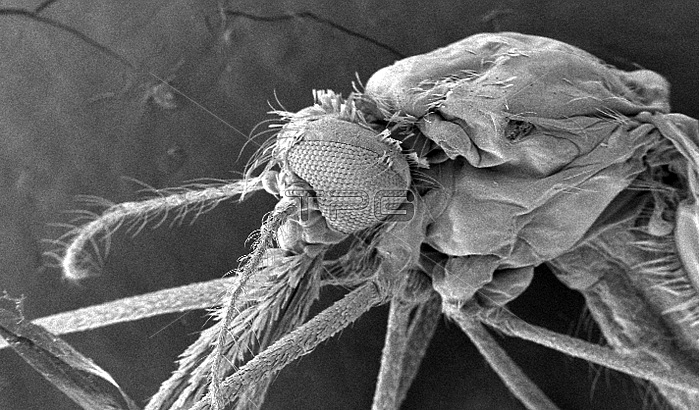
SEM showing the ultrastructural morphologic surface features of the head, and thoracic regions of an Anopheles gambiae mosquito. Human malaria is transmitted only by females of the genus Anopheles. Of the approximately 430 Anopheles species, only 30-40 transmit malaria in nature. An organism that transmits a disease to another organism is known as a vector. Note the compound eye, composed of numerous ommatidia, which are the small subunits that act in concert with one another to provide a comprehensive mosaic image to the organism of its surroundings. Like all mosquitoes, adult anophelines have slender bodies with 3 sections: head, thorax and abdomen. The head is specialized for acquiring sensory information and for feeding. The head contains the eyes and a pair of long, many-segmented antennae. The antennae are important for detecting host odors as well as odors of breeding sites where females lay eggs. The head also has an elongate, forward-projecting proboscis used for feeding, and two sensory palps. The thorax is specialized for locomotion. Three pairs of legs and a pair of wings are attached to the thorax. The abdomen is specialized for food digestion and egg development.
| px | px | dpi | = | cm | x | cm | = | MB |
Details
Creative#:
TOP22225112
Source:
達志影像
Authorization Type:
RM
Release Information:
須由TPG 完整授權
Model Release:
N/A
Property Release:
No
Right to Privacy:
No
Same folder images:

 Loading
Loading